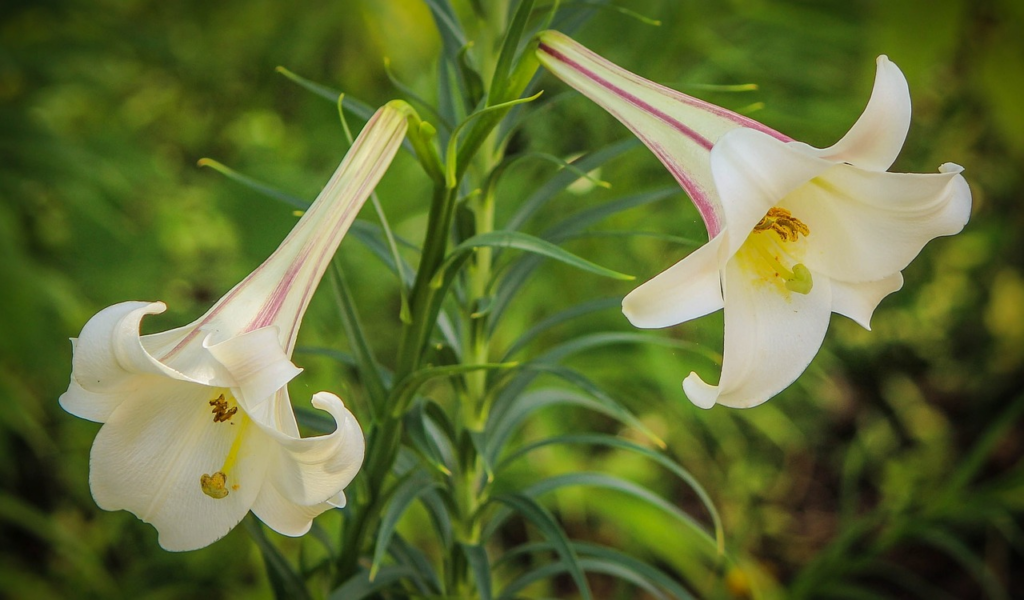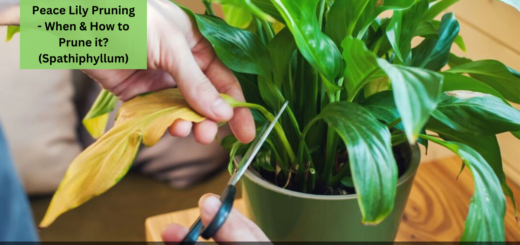What is a Rubrum Lily?- How to plant Rubrum Lilies?
Gardeners can build landscapes that are appealing to tourists because of their vibrant colors and heavenly aroma by creating multi-dimensional flower beds. Several flower species are fragrant, but those belonging to the Lilium genus are among the most frequent.
Here I am introducing in detail about Rubrum lily and various types of lilies like the Watsonia Bugle Lily, Rose Lily, False Lily, etc. Learning about them will help you to decide which type will grow best in your garden. So let’s not waste time and start reading.
Key takeaways:
- Gardeners all around the world adore lilies.
- These large, vivid, and consistent blossoms exude an unrivaled elegance. You can have blooms all summer long if you grow many different types.
- These blooms, which are known as “real” lilies, belong to the genus Lilium, as opposed to daylilies, which belong to the genus Hemerocallis.
- Though each species differs slightly, most lilies produce enormous beautiful flowers on long erect stems.
- Lilies are frequently the first flowers introduced by those intending to integrate the element of smell into the ornamental border due to their popularity.
- Rubrum lilies are a great choice for people looking for a large number of fragrant blooms late in the season.
Let us know how to plant them in detail.
What is a Rubrum lily?
Rubrum lily bulbs are hardy in USDA zones 5-7 and produce enormous clusters of dark pink blooms with even darker pink markings. These flowers, which are sometimes mistaken for Stargazer lilies, bloom in a peculiar downward-facing habit. Rubrum lilies are late bloomers that add amazing aesthetic interest to the end-of-summer garden, according to those who plant them. These lilies, which reach a mature size of 5 feet (1.5 meters), look great in the back of borders and/or in stunning mass plantings.
| TYPE | Oriental |
| SUB TYPE | Oriental, species, wildflower |
| ZONES | 5a-7b(9bWC) |
| HEIGHT | 4-5’ |
| BLOOM SEASONS | late summer |
| LIGHT | full sun, half sun |
| Foliage color | Green |
| Flower color | Red |
| Subspecies | Rubrum |
| Common name | Lilium Speciosum Rubrum |
FEW MORE TYPES OF LILIES –
- Asiatic lilies
- Trumpet lilies.
- Tiger lilies.
- Oriental lilies.
- Martagons.
Asiatic lilies
| Common Name: | Lily, Asiatic lily, Asiatic hybrid lily |
| Botanical Name: | Lilium Asiatic hybrids (formerly Lilium asiatica) |
| Family: | Liliaceae |
| Plant Type: | Perennial, Bulb |
| Mature Size: | 2-5 ft. tall |
| Sun Exposure: | Full, Partial |
| Soil Type: | Moist, Well-drained |
| Soil pH: | Acidic |
| Bloom Time: | Summer |
| Flower Color: | Pink, Red, Orange, Yellow, White, Purple |
| Hardiness Zones: | 4-9 (USDA) |
| Native Area: | Hybrid, no native range |
| Toxicity: | Toxic to cats and dogs |

Trumpet lilies.
| Light | Full Sun, Partial Shade |
| Size | 16-18 cm bulb |
| Zone | 3-8 |
| Bloom Time | Midsummer |
| Height | 4 – 6 feet |
| soil Requirement | Well drained |

Tiger lilies.
| Common Name | Tiger lily |
| Botanical Name | Lilium lancifolium (also Lilium tigrinum) |
| Family | Liliaceae |
| Plant Type | Herbaceous, perennial |
| Mature Size | 3–5 ft. tall, 7–8 in. wide |
| Sun Exposure | Full, partial |
| Soil Type | Loamy, moist, well-draining |
| Soil pH | Acidic |
| Bloom Time | Summer |
| Flower Color | Orange, red, yellow, white, pink |
| Hardiness Zones | 3–9 (USDA) |
| Native Area | Asia |
| Toxicity | Toxic to cats, toxic to humans |

Oriental lilies:
| Bloom Time | Summer |
| Mature Height | 24 – 36 inches |
| Hardiness Zones | 3 to 9 |
| Suitable Zones | zone 3 to zone 9 |
| Bulb Size | 14/16 cm |
| Plant Spacing | 6-9″ |
| Planting Depth | 4-6″ |
| Sunlight | Full Sun, partial shade |
| Package Contents | 8 Bulbs |

Martagons lilies:
| Hardiness zone | 3 to 9 |
| Heat zone | 1 to 7 |
| Climate zone | 1 to 10, 14 to 17 |
| Plant type | Bulb, perennials |
| genus | Lilium |
| exposure | Full sun, partial shade |
| Season of interest | Summer (early, mid) |
| Height | 2 to 6’ |
| Spread | 1 to 2’ |
| Spacing | 7” |
| Depth | 7” |
| Maintenance | Low |
| Water needs | Average |
| Soil type | Loamy, sandy, chalk |
| Soil ph | Alkaline, netural |
| Attracts | Bees |
| Characteristics | Cut flowers and showy. |

How to grow Rubrum lilies?
In suitable growing zones, Rubrum lily bulbs can be sown in early spring or late fall. Those planting Rubrum lilies should choose a location that receives part sun and drains well before planting. Though the bulbs are adaptable to a variety of soil types, they thrive in slightly acidic environments.
It’s crucial to know that Rubrum lily bulbs and plant parts are hazardous, just like all other species of lilies. Before planting, locations frequented by children and/or pets should be carefully considered. Rubrum lily upkeep is basic after planting. Staking is usually unnecessary with strong, robust flower stems. The spent blooms can be deadheaded and removed from the garden once the flowering has stopped.
Those who grow Rubrum lily plants should leave the foliage alone in the garden. As a result, the Rubrum lily roots will be able to save enough energy to return in consecutive growing seasons. Overall, Rubrum lily care is straightforward, and these plants will reward gardeners with lovely flowers for many years to come.
Their planting and care:
Lilies appear to be finicky plants, but they are incredibly simple to grow. They don’t mind if the soil is acidic or alkaline, and they thrive in full sun, partial shade, dappled shade, and even light shade. Lilies should be planted as soon as possible, whether in the autumn or spring. Because they lack the papery coating (known as a “tunic”) that other tough bulbs have, the bulbs might dry up quickly in storage.
For more such plant related-articles, you may also read, Rose Lily Flower Types, Images, and Care Tips
Lilies, more than any other bulb, require well-drained soil. Dig to a depth of at least 12 inches where you wish to plant lilies, remove rocks, and add organic matter like leaf mold or peat moss to improve the soil’s structure and drainage. Lilies, like other bulbs, benefit from a little bone meal scratched into the bottom of the planting hole, but they don’t require any more nutrients at the time of planting. Instead, wait until the bulbs produce green leaves before applying a complete organic fertilizer and watering them.
Use compost, well-rotted manure, or a longer-lasting mulch, such as bark mulch, wood chips, or cocoa shells, to keep the soil moist and cool around the lilies. To protect the bulbs from freeze-thaw cycles, cover the bed with straw and/or evergreen boughs over the winter, just as you would with other perennials.
Conclusion
In this article, you learned about the Rubrum lilies. Rubrum lilies are late bloomer that adds amazing aesthetic interest to the end-of-summer garden, according to those who plant them. These lilies, which reach a mature size of 5 feet (1.5 meters), look great in the back of borders and/or in stunning mass plantings. I hope it will be helpful for you all.
FAQ’s
Need to store lily bulbs before planting?
you can store the lily bulbs overnight in cold water before you start planting them. the right time for planting them is from late autumn to early spring.
How much depth do you need to plant the lily bulbs?
to plant lilies you need to deep a hole at least 8″ deep then fill the hole with all beneficial potting mix and plant the lily for a 6 to 7′ inch deep in hole.


